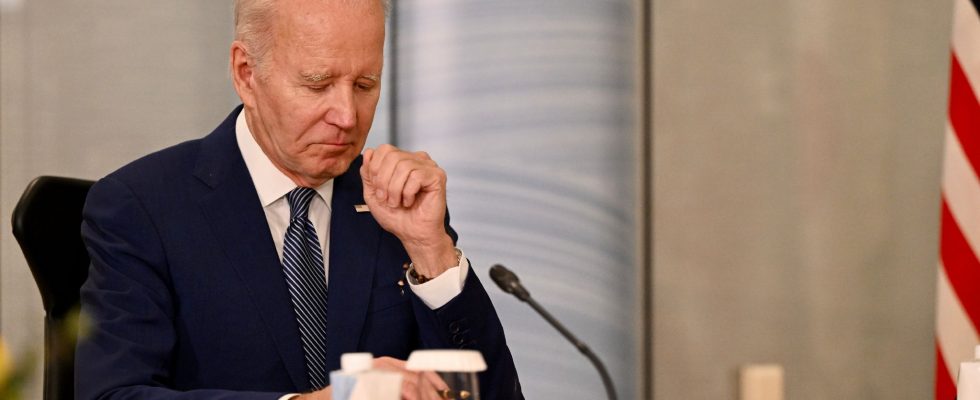One step forward, one step back. The debt battle continues to rage in the United States. To continue to borrow and repay its creditors, the country must raise its debt ceiling. But the Republican opposition, the majority in the House of Representatives, conditions its vote on major budget cuts, which President Joe Biden categorically refuses.
A few days before the payment default, negotiations between the government and the opposition have not advanced, forcing Joe Biden to cut short his tour in Asia – Pacific. The American president must return to the United States this Sunday, at the end of the G7 which is held in Japan, Hiroshima. In the meantime, a phone call is scheduled with Kevin McCarthy, the leader of the Republicans in the House of Representatives.
After first suggesting that there was better, this Friday the White House denounced in a statement “extreme partisan demands that could never be adopted in both houses of Congress”. Immediate response from the conservative camp: “Unfortunately, the left wing of the Democratic Party seems to be in control, especially with President Biden out of the country,” lamented Kevin McCarthy.
Republicans demand $130 billion in budget cuts
The point of friction between the two camps, beyond the postures: the request of the Republicans to reduce federal spending, to bring them back to 2022 levels. That is to say, cut 130 billion dollars in spending. “We can’t spend more money next year,” said Kevin McCarthy. A red line that the Democrats refuse to cross.
Since the start of the standoff, the American president has said that he will not give in to the “extreme” demands of the Republicans, while reassuring about the ability to conclude an agreement in the coming days. “I still think we will be able to avoid a default” of payment, he assured journalists on the sidelines of the G7 summit, while the leaders of the major Western powers are worried about a form of contagion if the American economy was weighed down by this umpteenth political crisis.
The debt threshold exceeded in January
A way to reassure the markets. Since 1960, the debt ceiling has been raised 78 times, and is now set at 31.4 trillion dollars, a threshold exceeded last January. If no agreement is reached, the situation could be catastrophic for the United States, which could no longer repay its creditors. “A payment default would cause irreparable damage to the American economy, the daily lives of all Americans, and the overall financial situation,” warned US Treasury Secretary Janet Yellen already in January.
If the payment default serves as a scarecrow to force the American right to accept without negotiating, the threat to the American economy is very real. In 2011, a similar impasse weighed on the financial markets, leading to the evaporation of 2.4 trillion dollars, according to various American reports, quoted by the New York Times. Some specialists fear that the cost will be even higher this time around, if the negotiations do not advance. Unlike in 2011, today, borrowing is now expensive in the United States, where key rates have been raised several times, and banks have also been weakened by several bankruptcies in recent months.
